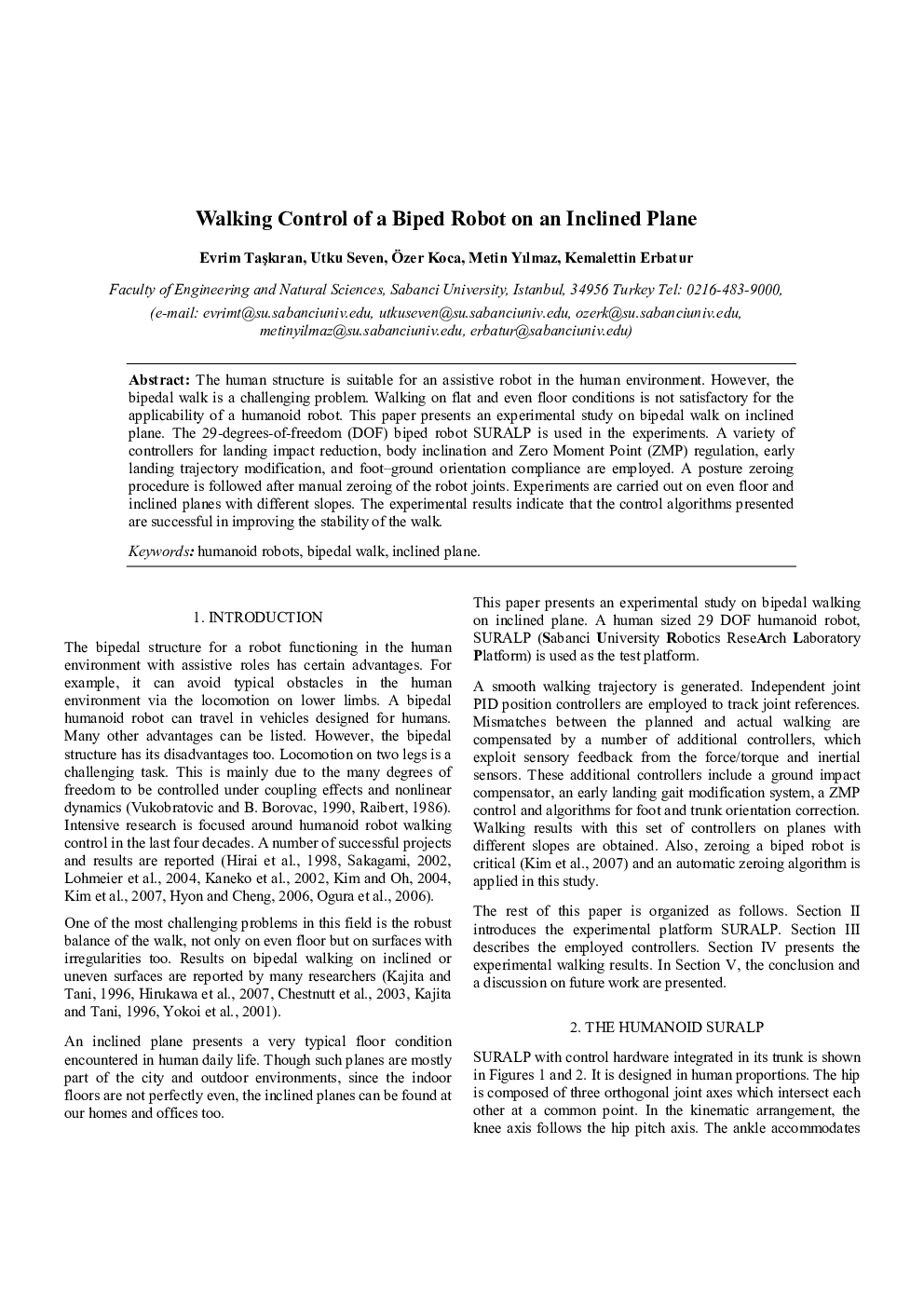| Article ID | Journal | Published Year | Pages | File Type |
|---|---|---|---|---|
| 710234 | IFAC Proceedings Volumes | 2009 | 6 Pages |
AbstractThe human structure is suitable for an assistive robot in the human environment. However, the bipedal walk is a challenging problem. Walking on flat and even floor conditions is not satisfactory for the applicability of a humanoid robot. This paper presents an experimental study on bipedal walk on inclined plane. The 29-degrees-of-freedom (DOF) biped robot SURALP is used in the experiments. A variety of controllers for landing impact reduction, body inclination and Zero Moment Point (ZMP) regulation, early landing trajectory modification, and foot–ground orientation compliance are employed. A posture zeroing procedure is followed after manual zeroing of the robot joints. Experiments are carried out on even floor and inclined planes with different slopes. The experimental results indicate that the control algorithms presented are successful in improving the stability of the walk.
